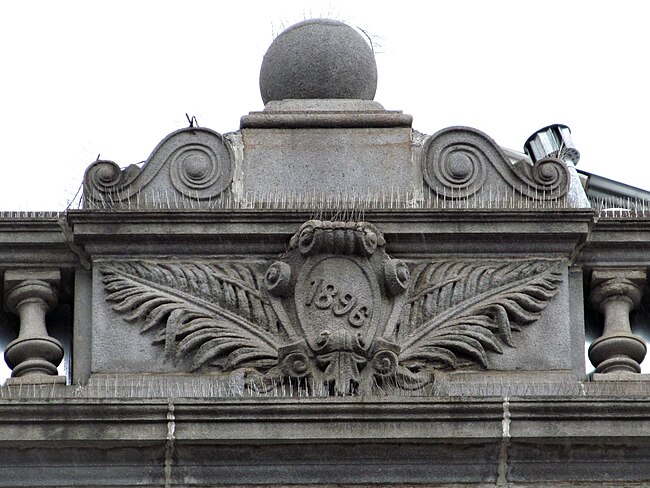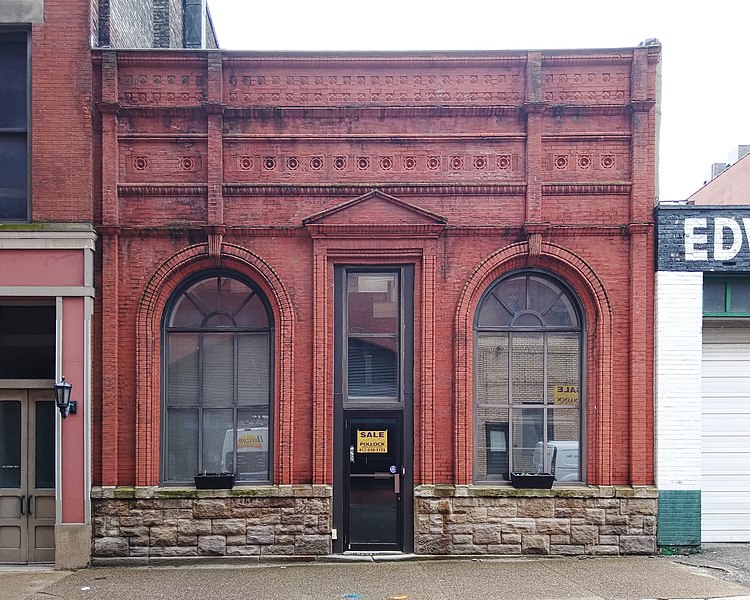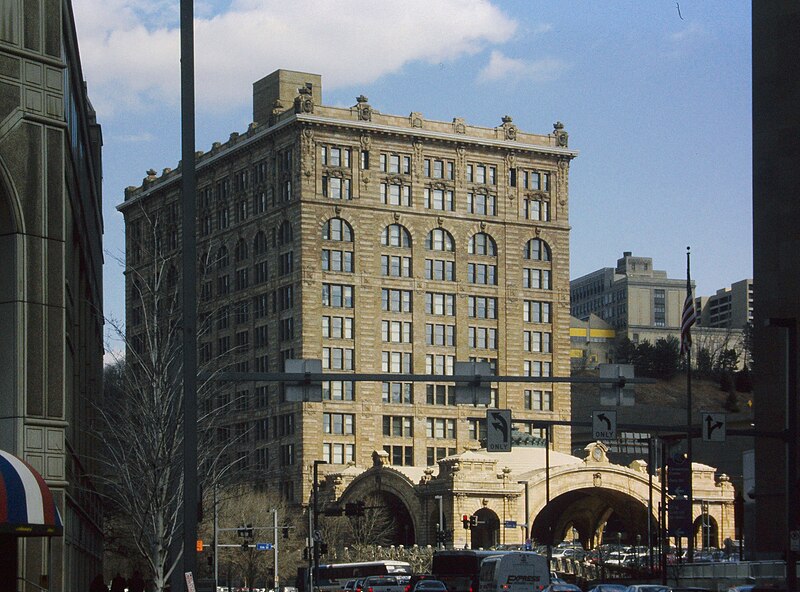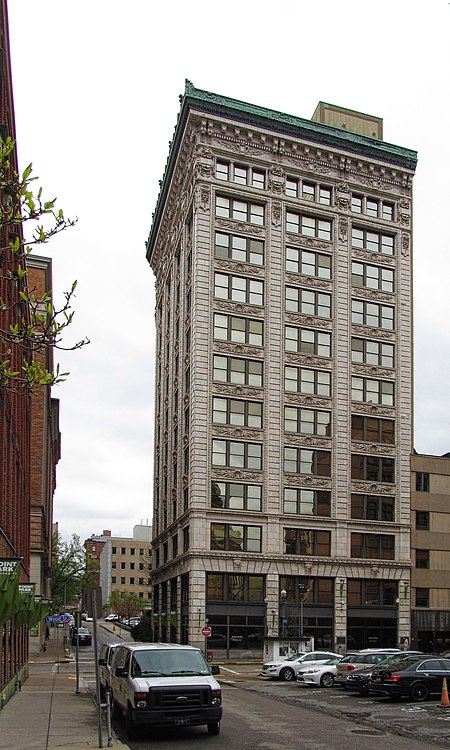
Frederick Osterling designed this school for the mushrooming borough in 1912. The building itself grew rapidly, with additions in 1914, 1916, and 1918, all in a matching style. According to the book Dormont by the Dormont Historical Society (one of the Images of America series by Arcadia Publishing), at some point in the second half of the twentieth century, high winds destroyed the original roof, and the building was given an up-to-date flat roof and a new front entrance with this fine late-Art-Deco sign.

In 1996, the school closed, and in 1999 the borough government moved in, so that this is now the William & Muriel Moreland Dormont Municipal Center. The Dormont Historical Society has a small museum here, open one day a week.
















